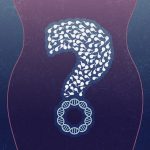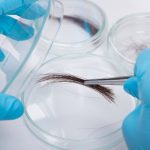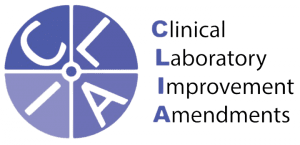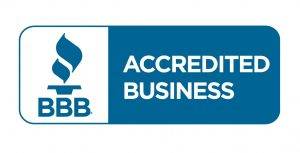There are several Paternity Tests to select from based on your specific needs. There are situations when someone just needs a paternity test for their piece of mind. In these cases, a home paternity test kit might be employed. More rigorous collecting techniques must be utilized if a DNA test is necessary for legal reasons or in an immigration case for the results to be admissible as evidence in a court of law. Knowing what information your DNA test results truly provide can make understanding them much easier. Since many of them will be taking a DNA test for the first time, the following details will assist you in understanding the test findings and help you read paternity test results.
How to Read a DNA Test?
Every human has two copies of the 22 chromosomes. One chromosome is inherited from the mother and the other from the father throughout the development of an embryo. There are also the sex chromosomes, which are XY for boys and XX for girls. Consequently, the embryo has 46 chromosomes.
To establish paternity, we first search for matching markers in the mother and the putative father and then check for markers at specified locations on these chromosomes in the kid. Each marker is assigned a number that corresponds to its dimensions. Matching Alleles are the results of our search for matches. Given that the mother will have contributed half of the child’s DNA, the biological father will have contributed the remaining half. The tested male may not be the child’s biological father if the profiles do not match.
To ascertain if the tested guy is eliminated or not as the father, we test 25 unique markers and look for matches between the child’s and the purported father’s markers. A match with 25 markers is required to be the biological father.
How to read A Paternity test?
Whether the findings of your DNA test show paternal inclusion or exclusion will determine how to read a paternity test and interpret the results.
A table showing each of the genetic markers that were retrieved from the DNA samples is displayed. This table is included in the report you will get. The findings are shown in separate columns for the kid, the purported father, and the mother if she is tested. Paternity inclusion, which verifies that the father who has undergone testing is the child’s biological father, is one potential outcome. The Statement of Results on the report will state that the alleged father cannot be excluded as the biological father of the tested child in this instance when the likelihood will be more than 99.99%. Drawing on the STR loci analysis shown above, the paternity probability is 99.99%.
Paternity will be ruled out if the tested father is not the child’s biological father. In this instance, there would be no chance of paternity, and the report’s Statement of Results would state that the alleged father is excluded as the biological father of the tested child. The non-matching alleles found at the STR loci mentioned above with a DI of 0 provide the basis for this conclusion. The likelihood of paternity is zero.
What does not excluded mean on a paternity test?
Perhaps the most significant portion of a paternity DNA test result is this one. Regretfully, it can be the most perplexing due to the legalese utilized. The report will present one of two conclusions: an inclusion or an exclusion. The actual meanings of the two conclusion statements are shown below.
Inclusion: If the conclusion reads, not excluded as the biological father, it indicates that the male subject of the test is most likely the child’s biological father because all of the information obtained from the test points to a paternity tie.
Exclusion : If the conclusion reads is excluded as the biological father, it indicates that the male subject of the test IS NOT the child’s biological father because the test’s results do not establish a relationship of paternity.
How to spot fake DNA test results?
It’s fair to be wary if your intuition tells you that someone could be trying to con you by offering you fictitious paternity DNA results. We’ve got you covered, even though it might be challenging for the average individual who is wondering how to read a paternity test through and comprehend even fabricated findings. There are several indicators that DNA test results are fake, but even if they are genuine, we’ll teach you how to interpret the data so you don’t have to rely solely on reports from others.
- Examine the report to identify any irregularities or discrepancies that point to blatantly false outcomes.
- Verify by counting the number of matched alleles that they line up. The CPI and conclusion should be in line with that number of matches.
- To ensure it is their report, get in touch with the lab using the letterhead. Compare it with their sample report if they refuse to validate it.
- A test is bogus if it includes more than one parent of the same gender. No lab will compare two moms or dads on the same report.
- Legitimate DNA testing can never completely confirm anything. A 100% result is probably fake since a DNA test cannot determine with 100% confidence that someone is related—only that the probabilities are extremely, extremely high. It can, nonetheless, yield a result of 0%.
- “You are the father” or “You are not the father” will never appear in the findings. Whether the findings are positive or not will be determined holistically based on the composite paternity index.
- Be wary if the findings are given in less than 48 hours. These things take time unless there’s a court order expediting the procedure. It takes time for a laboratory to examine and analyze every locus, and results are rarely available in less than a day.
What does the probability of paternity 99.9 mean?
Your DNA paternity test’s likelihood of fatherhood, displayed as a percentage, is determined by taking into account all of the test findings. For example, suppose the probability of paternity is 99.99%. If you are struggling with how to read a paternity test and 99.99% results come up in that case, it indicates that the alleged father has a 99.99% higher chance of being the child’s biological father than a random guy selected from the same ethnic group.
DNA paternity testing frequently yields high odds of 99% and higher but never 100%. This is so because statistical computations provide the basis of the outcomes. If the likelihood exceeds 99%, it indicates that there is almost no possibility that any other man aside from the tested man is the child’s father.
Where to get a Paternity test?
There might be an overwhelming number of laboratories and resellers when you initially decide to have a DNA test. Furthermore, as everyone is aware, there are a lot of fraudulent websites on the internet that impersonate trustworthy companies to steal your money. Some even offer you a fake paternity test result, while others provide testing that is utterly unreliable and frequently inaccurate. The reason it is more of an issue in this market is that consumers are unaware of what to anticipate, how paternity testing is intended to operate, and how to evaluate the caliber of the test they obtain. Check with authentic, reputed, and certified testing facilities such as Choice DNA Testing.
Pregnancy and Doubts? Resolve them with Paternity Testing!
Get Accurate Answers With Our Paternity Test!

To begin safeguarding yourself against deceitful firms and obtaining trustworthy DNA testing, place a quick inquiry about the company you are thinking about doing business with and inquire about the following:
- Will a certified laboratory by the AABB conduct my DNA test, and if so, which particular laboratory?
- How many DNA sites (also known as genetic markers or loci) are tested in the first test? Our recommendation is to examine sixteen DNA places in the first test.
- What is their promised minimum likelihood of paternity (we suggest a minimum of 99.99%), and does this assurance extend to tests conducted without the mother’s presence and even in the event that your test reveals DNA mutations?
You can use the facility with great confidence and obtain dependable testing provided it satisfies the three conditions listed above and you have confirmed its AABB certification. The reason they are the crucial questions to ask is covered in the remainder of this section.
Conclusion
DNA testing may be an extremely emotional procedure for all parties involved. People occasionally get their relationships verified with reputed DNA testing facilities like Choice DNA. This helps dispel any doubts they may have about them. In other situations, the findings can indicate that a person you thought you were linked to is not biologically related to you. DNA test results offer definitive proof of biological kinship, but they might not necessarily represent the established cultural ties between you and the test subjects.



















